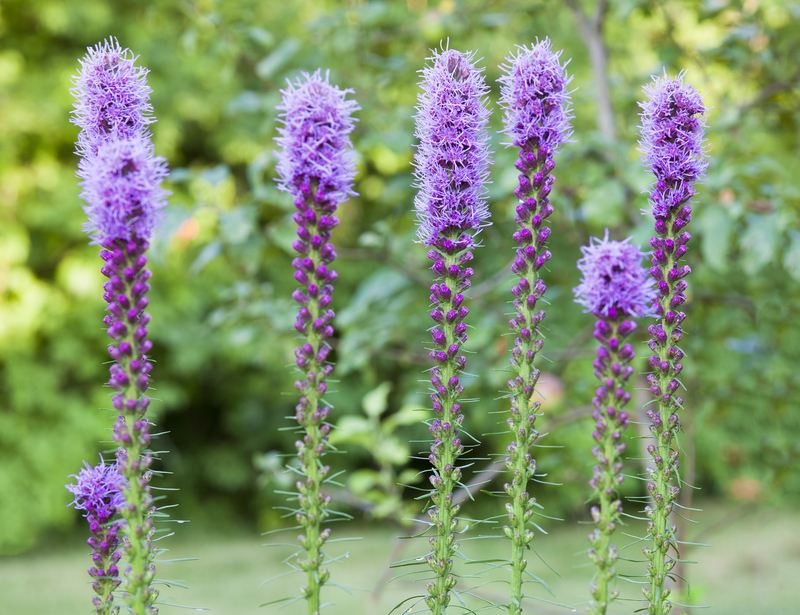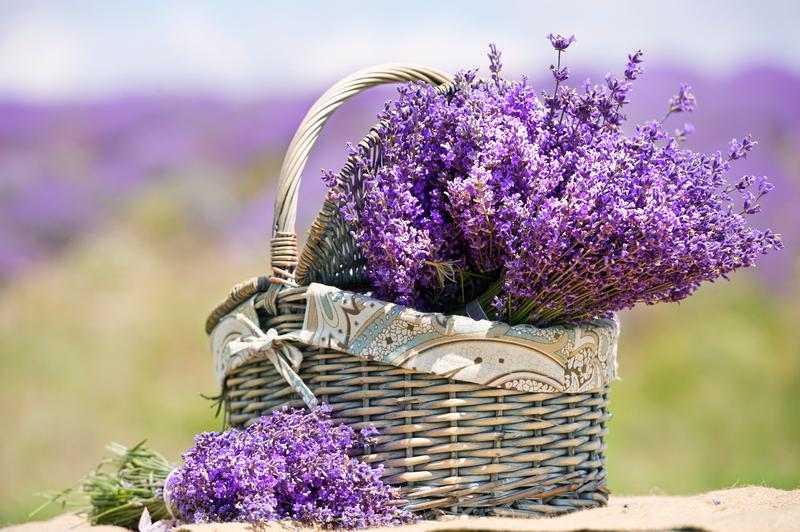Create a Vibrant Herb Oasis
Posted on 17/06/2025
Create a Vibrant Herb Oasis: Your Comprehensive Guide
Welcome to your ultimate guide to creating a vibrant herb oasis! If you've ever dreamed of walking through your own lush, aromatic paradise filled with fresh, flourishing herbs, you're in the right place. This comprehensive article will lead you through each step, from planning and designing to planting and maintaining your colorful, thriving herb garden. Whether you have a sprawling backyard or a cozy balcony, these strategies are tailored for anyone aspiring to cultivate their own herb haven.

Why Create a Vibrant Herb Oasis?
Growing herbs is more than just a hobby--it's a lifestyle that rewards you with beauty, flavor, fragrance, and wellness. Herb gardens can:
- Enrich your cooking with fresh, organic flavors.
- Boost your well-being through aromatherapy and medicinal uses.
- Enhance your landscape with lush greens and pops of color.
- Attract pollinators like bees and butterflies, supporting the environment.
Ready to start your journey? Dive in and learn how to establish a striking herb oasis that will transform your outdoor (or indoor) space!
Planning Your Herb Sanctuary
Assess Your Space
Begin by examining where you want to grow your herbs. Herbs are highly adaptable--they thrive in raised beds, containers, window boxes, and traditional gardens. Ask yourself:
- How much sunlight does my area receive? Most herbs need 6-8 hours of sunlight daily.
- Is there protection from strong winds?
- Is the soil fertile and well-draining?
Choose the Right Location for Your Herb Garden
For maximum vibrancy, pick a location where your herbs receive plenty of natural light and are easily accessible for pruning, harvesting, and maintenance. Kitchen proximity is ideal, making it convenient to snip herbs as needed.
Selecting Herbs for Your Patch of Paradise
The variety you plant will influence not only your garden's appearance but also its utility. Consider mixing culinary, medicinal, and ornamental herbs to create a multi-sensory experience.
- Culinary Stars: Basil, rosemary, thyme, chives, mint, oregano, sage, parsley, dill.
- Fragrant Aromatics: Lavender, lemon balm, chamomile, scented geraniums.
- Eye-Catching Beauties: Purple basil, variegated sage, flowering chives, borage.
- Medicinal Marvels: Echinacea, calendula, feverfew, comfrey.
Designing a Colorful and Functional Herb Oasis
Visual Layers and Textures
Use herbs with different heights, colors, and leaf textures to create a visually stunning landscape. Combine upright plants like rosemary and sage with mounding types like basil and oregano, and allow creepers like thyme to flow over borders.
Companion Planting
Mix herbs that benefit each other when grown together, a technique known as companion planting. For example, basil enhances the growth of tomatoes, and chamomile boosts essential oils in other herbs.
- Group by Water Needs: Place Mediterranean herbs like rosemary and thyme together, as they prefer drier soils, and keep moisture-loving herbs such as mint and parsley in another section.
- Incorporate Flowers: Plant calendula or nasturtiums along with herbs to attract pollinators and repel pests.
Embrace Containers and Vertical Gardening
If space is a concern, use containers, hanging baskets, or vertical wall gardens. Containers allow you to control soil quality--and bring your herb retreat indoors during colder months. Vertical gardens add height and depth to balconies and patios, maximizing your growing area while adding dramatic appeal.
Soil Preparation and Planting
Soil Quality Matters
The secret to a thriving herb garden lies in the soil. Most herbs prefer well-draining, fertile soil with a pH between 6.0 and 7.0. Amend your soil with organic compost and ensure good drainage by incorporating perlite or sand if needed.
- Raised Beds: Offer excellent drainage and allow you to enrich soil easily.
- Container Mix: Invest in high-quality potting soil for containers; avoid garden soil as it can compact and hinder root growth.
Planting Herbs for Maximum Impact
Plant herbs according to spacing recommendations on the seed packet or plant label. Most require 6-18 inches between plants, depending on species. Planting densely may look lush initially, but can reduce airflow and increase disease risk.
- Seed vs. Seedling: Some herbs (like basil, dill, cilantro) grow easily from seed, while others (rosemary, thyme) do best started as seedlings or cuttings.
- Staggered Planting: To prolong your harvest, sow some herb seeds every few weeks.
Caring for Your Herb Paradise
Watering Wisdom
Most herbs don't like soggy feet. Water only when the soil is dry an inch below the surface. Water deeply, but less frequently, to encourage deep root growth. Container herbs may need more frequent watering, especially in summer heat.
Feeding and Mulching
- Feeding: Use organic fertilizers like fish emulsion or compost tea every 4-6 weeks. Avoid overfeeding, which can promote lush foliage at the expense of flavor.
- Mulching: Apply a layer of straw or bark mulch around your herbs to conserve moisture, suppress weeds, and keep roots cool.
Pruning Techniques for Bushier Growth
Pinch and harvest your herbs regularly. This encourages bushy growth and prevents flowering, which can signal the plant to stop producing leaves. For example:
- Basil: Pinch off top sets of leaves regularly; never let it flower for best flavor.
- Mint: Cut stalks back before flowering for the freshest taste and bushy plants.
- Rosemary: Tip-prune often to keep compact.
Dealing with Pests and Problems
Natural Pest Control for Your Herb Garden
A herb oasis thrives with minimal chemical intervention. Herbs like basil, lavender, and mint repel many pests naturally, but if you encounter aphids, mites, or slugs, try these natural remedies:
- Handpick pests or spray with a water blast to dislodge them.
- Use organic insecticidal soap or neem oil for heavy infestations.
- Encourage beneficial insects--ladybugs, lacewings, and birds--to patrol your patch.
Disease Prevention
- Good Airflow: Space plants properly and avoid overhead watering to prevent mildew and rot.
- Healthy Soil: Crop rotation and compost amendment keep soil disease-free.
Enjoying and Expanding Your Herb Oasis
Creative Ways to Use Your Herbs
Once your herb garden blooms, enjoy its bounty in a variety of ways:
- Culinary Delights: Elevate everyday meals by adding fresh basil to salads, rosemary to roasted veggies, or parsley to pasta.
- Herbal Teas: Brew calming teas with chamomile, lemon balm, or mint straight from your garden.
- Beauty and Wellness: Infuse oils with calendula or lavender for soothing skin-care products.
- Decor: Dry bundles of oregano, thyme, or sage for aromatic, rustic bouquets and wreaths.
Preserving Your Harvest
Herbs are best enjoyed fresh, but you can extend your harvest through simple preservation methods:
- Drying: Hang small bunches upside-down in a cool, airy space.
- Freezing: Chop herbs and freeze in ice cube trays with water or olive oil.
- Infusing: Make herbal vinegars, butters, or simple syrups for unique flavors year-round.
Herbs for Every Season
Cool-Season and Warm-Season Herbs for a Lasting Oasis
Keep your herb garden vibrant year-round by planting seasonal varieties:
- Spring/Summer: Basil, cilantro, dill, chives, parsley, rosemary, sage, mint.
- Fall/Winter: Chervil, parsley, thyme, chives, rosemary (in mild climates).
Grow perennial herbs like mint, oregano, and thyme for long-term production, and re-seed annuals such as basil or cilantro every year for a consistent harvest.
Herb Oasis Inspiration: Styles & Ideas
Classic Kitchen Herb Garden
Plant classic culinary herbs in neat rows or labeled containers near your kitchen door. Use colorful pots to give the garden character and make harvesting a breeze.
Mediterranean Herb Oasis
Replicate the sun-drenched gardens of southern Europe with rosemary, thyme, oregano, sage, and lavender. Incorporate terracotta pots, gravel mulch, and rustic benches for authentic charm.
Vertical Balcony Herb Haven
Use wall-mounted pockets, stacked planters, or trellis systems to grow herbs upwards. This not only saves space but also adds a lush, living backdrop to urban apartments and small patios.
Pollinator-Friendly Herb Patch
Focus on herbs like borage, fennel, and lavender to attract bees and butterflies. Allow some plants to flower fully to support local wildlife, creating an oasis for both you and nature.

Final Thoughts: Cultivating a Joyful Herb Sanctuary
Creating a vibrant herb oasis is an enriching, rewarding project for gardeners of every experience level. With thoughtful planning, selection, and care, your herb oasis will provide endless pleasure--for your taste buds, your senses, and your soul. Whether it's a green corner on your balcony or a sprawling, fragrant retreat in your backyard, let your creativity guide you. Remember, every leaf snipped and every flower admired brings you closer to nature's heart.
Start your journey today, and soon you'll have your very own herb paradise--a lush, beautiful, and vibrant oasis that delights all year round.
Frequently Asked Questions: Creating Your Herb Oasis
- Can I grow a herb oasis indoors?
Absolutely! Many herbs thrive indoors provided they get at least 6 hours of sunlight or supplemental LED grow lights. Use quality potting soil and ensure pots have drainage holes. - Which herbs are easiest for beginners?
Try basil, parsley, mint, chives, and thyme. These are forgiving, fast-growing, and add color and aroma to any space. - How often should I water my herbs?
Water when the top inch of soil is dry. Be cautious not to overwater; most herbs prefer slightly dry conditions between watering. - What are the best ways to harvest herbs?
Use clean scissors to snip leaves or stems, always leaving at least one-third of the plant intact for regrowth.
You're now equipped with all you need to craft your own vibrant herb oasis. Happy gardening!

